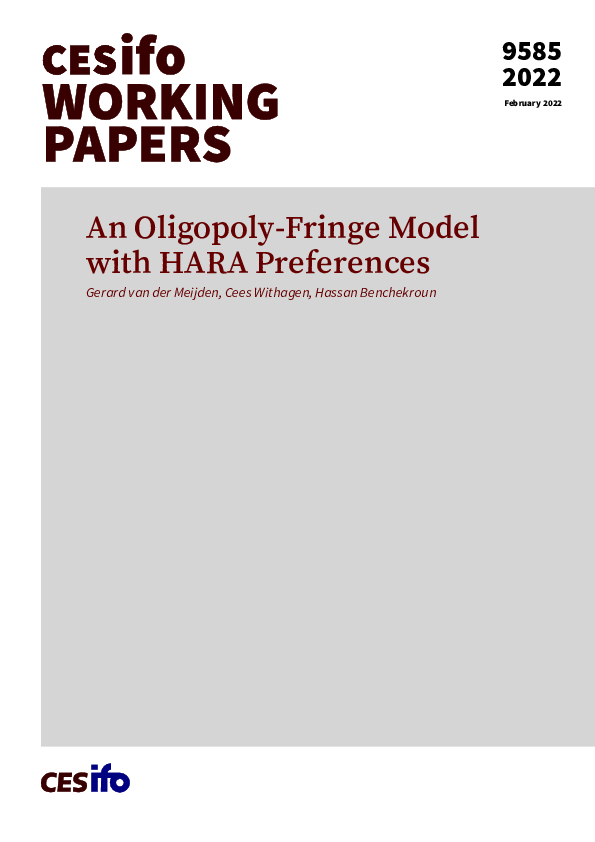An Oligopoly-Fringe Model with HARA Preferences
CESifo, Munich, 2022
CESifo Working Paper No. 9585

Inspired by empirical evidence from the oil market, we build a model of an oligopoly facing a fringe as well as competition from renewable resources. We explore different subclasses of HARA utility functions (Cobb-Douglas, power and quadratic utility) to check the robustness of results found in the previous literature. For isoelastic demand, we characterize the equilibrium extraction rates of the fringe and the oligopolists. There always exists a phase of simultaneous supply of the oligopolists and the fringe, implying an inefficient order of use of resources since the oligopolists have smaller unit extraction costs and carbon emissions than the fringe. We calibrate our model to the oil market to quantify this sequence effect. In our benchmark calibration, we find for the three HARA subclasses that the sequence effect is responsible for almost all of the welfare loss compared to the first-best. It becomes smaller as market power decreases. Furthermore, we show that climate damage and Green Paradox effects depend non-monotonically on the degree of market power.